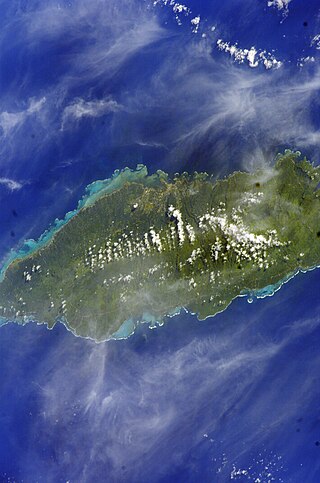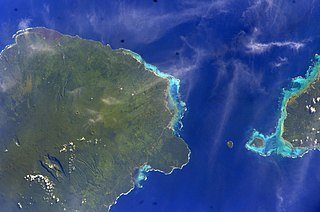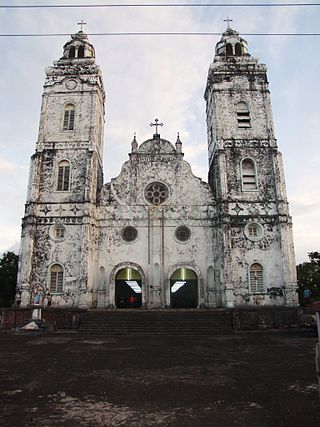
Samoa, officially the Independent State of Samoa and known until 1997 as Western Samoa, is an island country in Polynesia, consisting of two main islands ; two smaller, inhabited islands ; and several smaller, uninhabited islands, including the Aleipata Islands. Samoa is located 64 km west of American Samoa, 889 km northeast of Tonga, 1,152 km northeast of Fiji, 483 km east of Wallis and Futuna, 1,151 km southeast of Tuvalu, 519 km south of Tokelau, 4,190 km southwest of Hawaii, and 610 km northwest of Niue. The capital and largest city is Apia. The Lapita people discovered and settled the Samoan Islands around 3,500 years ago. They developed a Samoan language and Samoan cultural identity.

The Samoan Islands were first settled some 3,500 years ago as part of the Austronesian expansion. Both Samoa's early history and its more recent history are strongly connected to the histories of Tonga and Fiji, nearby islands with which Samoa has long had genealogical links as well as shared cultural traditions.

German Samoa officially Malo Kaisalika / Kingdom of Samoa was a German protectorate from 1900 to 1920, consisting of the islands of Upolu, Savai'i, Apolima and Manono, now wholly within the Independent State of Samoa, formerly Western Samoa. Samoa was the last German colonial acquisition in the Pacific basin, received following the Tripartite Convention signed at Washington on 2 December 1899 with ratifications exchanged on 16 February 1900. It was the only German colony in the Pacific, aside from the Jiaozhou Bay Leased Territory in China, that was administered separately from German New Guinea.
The Mau was a non-violent movement for Samoan independence from colonial rule during the first half of the 20th century. Mau means 'resolute' or 'resolved' in the sense of 'opinion', 'unwavering', 'to be decided', or 'testimony'; also denoting 'firm strength' in Samoan. The motto for the Mau were the words Samoa mo Samoa. Similarly in Hawaiian Mau means to strive or persevere, and is often linked with Hawaiian poetry relating to independence and sovereignty struggles.

Savaiʻi is the largest and highest island both in Samoa and in the Samoan Islands chain. The island is also the sixth largest in Polynesia, behind the three main islands of New Zealand and the Hawaiian Islands of Hawaii and Maui. While it is larger than the second main island, Upolu, it is significantly less populated.

Gagaʻemauga is a district on the island of Savaiʻi in Samoa. The district is situated on the central north side of Savaiʻi. The name 'Gagaʻemauga' literally means "near side of the mountain", meaning the eastern side of the mountain chain running through the centre of Savaiʻi Island.

Tuamāsaga is a district of Samoa, with a population of 95,907. This makes it the most populous district in Samoa. The geographic area of Tuamasaga covers the central part of Upolu island, and includes the capital, Apia.

Faʻasaleleaga is a district of Samoa situated on the eastern side of Savaiʻi island. It has a population of 13,566.

Tupua Tamasese, formally known as Tupua, is a state dynasty and one of the four paramount chiefly titles of Samoa, known as the tama a ʻāiga. It is the titular head of one of Samoa's two great royal families – Sā Tupua, the lineage of Queen Salamasina. The current holder of the title is Tui Ātua Tupua Tamasese Efi.

Susuga Malietoa Tanumafili I was the Malietoa in Samoa from 1898 until his death in 1939. After the death of his father, Malietoa Laupepa, who was recognized as king of Samoa by many Western countries, Tanumafili was immediately crowned, with Tupua Tamasese Lealofi I serving as vice-king. Tanumafili was backed by the United States and United Kingdom, however Germany supported rebel chief Mata‘afa Iosefo who was eyeing the throne. The battle between the two made up the Second Samoan Civil War and in the end caused the Tripartite Convention that split the islands. After the war, Malietoa pursued education in Fiji and then came back to Samoa, where he was appointed as an advisor.
Le Susuga Malietoa Talavou Tonumaipeʻa was installed as "King" of Samoa to the western world on August 28, 1879, until his death on November 9, 1880. Since Malietoa Talavou's half brother's death, Malietoa Moli in 1860, ongoing wars due to power and authority struggle between Talavou and Laupepa over the next Malietoa title holder and the gaining of support by the districts of Samoa. Family rivalry existed as did a 30-year age difference drew a wedge between Malietoa Laupepa and Malietoa Talavou. They were known to be longtime rivals over the Malietoa title.
Matautu is the name of different villages in Samoa. Places named Matautu are found on the two largest islands, Upolu and Savaiʻi.

Falefā is located on the north eastern coast of Upolu island in Samoa. It was the ancient capital during the ‘Malo’ (‘government’) of Tupu Tafa'ifa (King) Fonoti after defeating his kin Va'afusuaga Toleafoa and Samalaulu for control of Samoa. King Fonoti chose to rule from his new seat in Falefa, an honour remembered in its faalupega to this day.

Safotulafai is a traditional village at the east end of Savai'i island with historical and political significance in Samoa's history. It is the traditional center of the island of Savaii, now became the center of Fa'asaleleaga political district.

Safotu is a village on the central north coast of Savai'i island in Samoa. Safotu is in the district Gagaifomauga and has a population of 1270. Traditionally, it attained the status of 'Pule,' customary political authority, and has been the main centre of the Gagaifomauga district.

Thomas Andrew was a New Zealand photographer who lived in Samoa from 1891 until his death in 1939.
Alfred James Tattersall was a New Zealand photographer, who lived in Samoa for most of his life and contributed a significant collection of images of the Pacific Island country and its peoples during the colonial era.

The Territory of Western Samoa was the civil administration of Western Samoa by New Zealand between 1920 and Samoan independence in 1962. In 1914, German Samoa was captured by the Samoa Expeditionary Force shortly after the outbreak of World War I, and was formally annexed as a League of Nations mandate in 1920 in the Treaty of Versailles. It was later transformed into a United Nations Trust Territory following the dissolution of the League of Nations in 1946.

Fatausi is a village on the island of Savai'i in Samoa. It is situated on the east coast of the island in the district of Fa'asaleleaga and the electoral district of Fa'asaleleaga 3. The population is 205.

New Zealand and Samoa have had close relations based on a treaty of friendship between the two countries since Samoa became independent in 1962. New Zealand administered Samoa under a League of Nations mandate then a United Nations trusteeship from 1920 to 1961. Both nations are members of the Commonwealth of Nations and the Pacific Islands Forum.



















